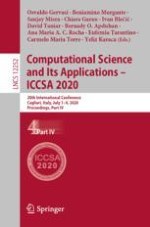2020 | OriginalPaper | Buchkapitel
Geoprofiling in the Context of Civil Security: KDE Process Optimisation for Hotspot Analysis of Massive Emergency Location Data
verfasst von : Julia Gonschorek
Erschienen in: Computational Science and Its Applications – ICCSA 2020
Aktivieren Sie unsere intelligente Suche, um passende Fachinhalte oder Patente zu finden.
Wählen Sie Textabschnitte aus um mit Künstlicher Intelligenz passenden Patente zu finden. powered by
Markieren Sie Textabschnitte, um KI-gestützt weitere passende Inhalte zu finden. powered by
